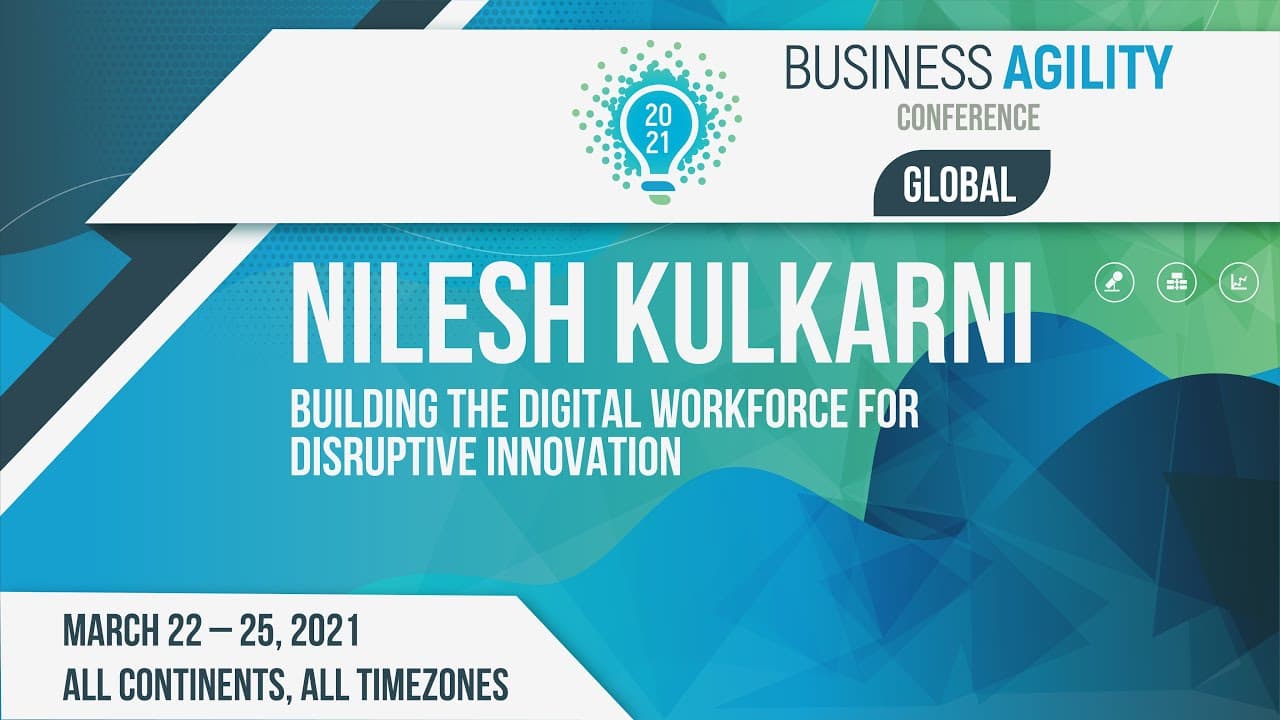All right, thanks everyone again. Today, I want to share my experiences and observations from the industry on building the digital workforce for disruptive innovation.
I am Nilesh Kulkani, a Principal Consultant in Digital Transformation Advisory with ThoughtWorks, based out of Pune. I will share learnings from the teams and organizations I have worked with and explore the connection between workforce and disruption.
The Changing Landscape
A lot is changing around us—the way transformations happen, the way businesses are run, and how organizations compete in an evolving market. I’m sure you recognize some of these logos: Amazon, Uber, Airbnb, Netflix—these are innovators that have disrupted industries and changed the way things used to work.
Do we need to join this journey? Not necessarily—survival is not mandatory. But if we want to stay in business, we must adapt, embrace change, and understand what we need to do to remain competitive in this ever-evolving landscape. Every organization is preparing for disruption and innovation, but is this possible without the right skills?
The Challenges in Workforce Readiness
Through my work with various organizations, I have observed several challenges that prevent businesses from being truly ready for digital transformation:
- Lack of clarity on necessary skills: Many organizations do not know which skills or roles are required to bridge the gap between their current state and their future vision.
- Outdated hiring processes: Traditional hiring approaches no longer support the need for a digital-ready workforce.
- Resistance to transformation: While leadership may be convinced about change, existing employees often resist transformation efforts, slowing progress.
- Ineffective learning initiatives: Organizations invest in upskilling programs, but there are often no tangible business outcomes.
- Scaling talent development: Even when success is achieved in smaller teams, organizations struggle to scale talent development efforts across all functions.
Addressing These Challenges
To overcome these challenges, organizations need to take a structured approach:
- Identify the skills and roles necessary for digital transformation.
- Modernize hiring strategies to focus on adaptability and learning ability.
- Develop structured plans to transition existing employees into new roles.
- Foster a learning culture that connects upskilling efforts to business goals.
- Ensure talent development efforts scale effectively across the organization.
Digital Talent Portfolio
Does digital talent differ from traditional roles? The answer is both yes and no. While roles and responsibilities have always evolved, the pace of change today is exponential. This means talent development must be an ongoing process, not a one-time initiative.
Skills are not limited to software development. Digital transformation impacts every function—finance, marketing, infrastructure, and more. Organizations must ensure they have the right talent in all areas to enable innovation.
Key steps in talent portfolio development:
- Identify the necessary skills and roles.
- Assess current skill levels within the organization.
- Decide whether to build internal skills or acquire new talent.
Modernizing Hiring Practices
Traditional hiring focuses on matching candidates to fixed skillsets, but this approach is no longer effective. Responsibilities today may change within a year, making it difficult to sustain rigid job profiles.
Key shifts in hiring strategy:
- Hire for cultural attributes and learning agility, not just current skills.
- Balance internal development with strategic hiring to bring fresh perspectives.
- Assess candidates based on applied problem-solving, not just certifications.
Organizations must ensure they are hiring individuals who can adapt to continuous learning and innovation.
Managing Resistance to Change
Resistance to transformation is natural. Employees may fear the unknown or worry about their role in the new landscape. Organizations need clear strategies to address this:
- Role transition plans: Help employees understand how their previous experience is still valuable and how they can contribute to the future.
- Engagement and communication: Provide transparency about changes and involve employees in shaping the transformation.
- Cultural integration: Ensure new hires and existing employees work together seamlessly rather than forming isolated subcultures.
Building a Learning Organization
Many organizations provide learning resources, but without a structured approach, these efforts lack tangible results. Learning initiatives must be aligned with business objectives.
Key principles of a learning culture:
- Balance structured learning with hands-on experience.
- Encourage experimentation and accept failure as part of learning.
- Align learning efforts with strategic business goals.
Organizations must also evaluate the cost of not learning. If competitors are innovating faster, the real cost is falling behind.
Scaling Workforce Transformation
What works for small teams may not work at scale. To build a truly digital workforce, organizations need mechanisms to scale upskilling efforts.
Key enablers for scaling:
- Change champions: Appoint leaders within teams to drive transformation.
- Lead by example: Leadership must adopt new skills and demonstrate learning behaviors.
- Leverage communities of practice: Encourage cross-team knowledge sharing to accelerate adoption.
Conclusion
To build a successful digital workforce, organizations must:
- Prioritize workforce enablement as a strategic initiative.
- Modernize talent acquisition and development.
- Treat transformation as a change management effort, not just a process change.
Innovation is driven by people. If we equip our workforce with the right skills and mindset, we empower them to lead disruption rather than be disrupted.
Thank you very much! We will now move into breakout sessions to continue learning from each other. Looking forward to your insights!



